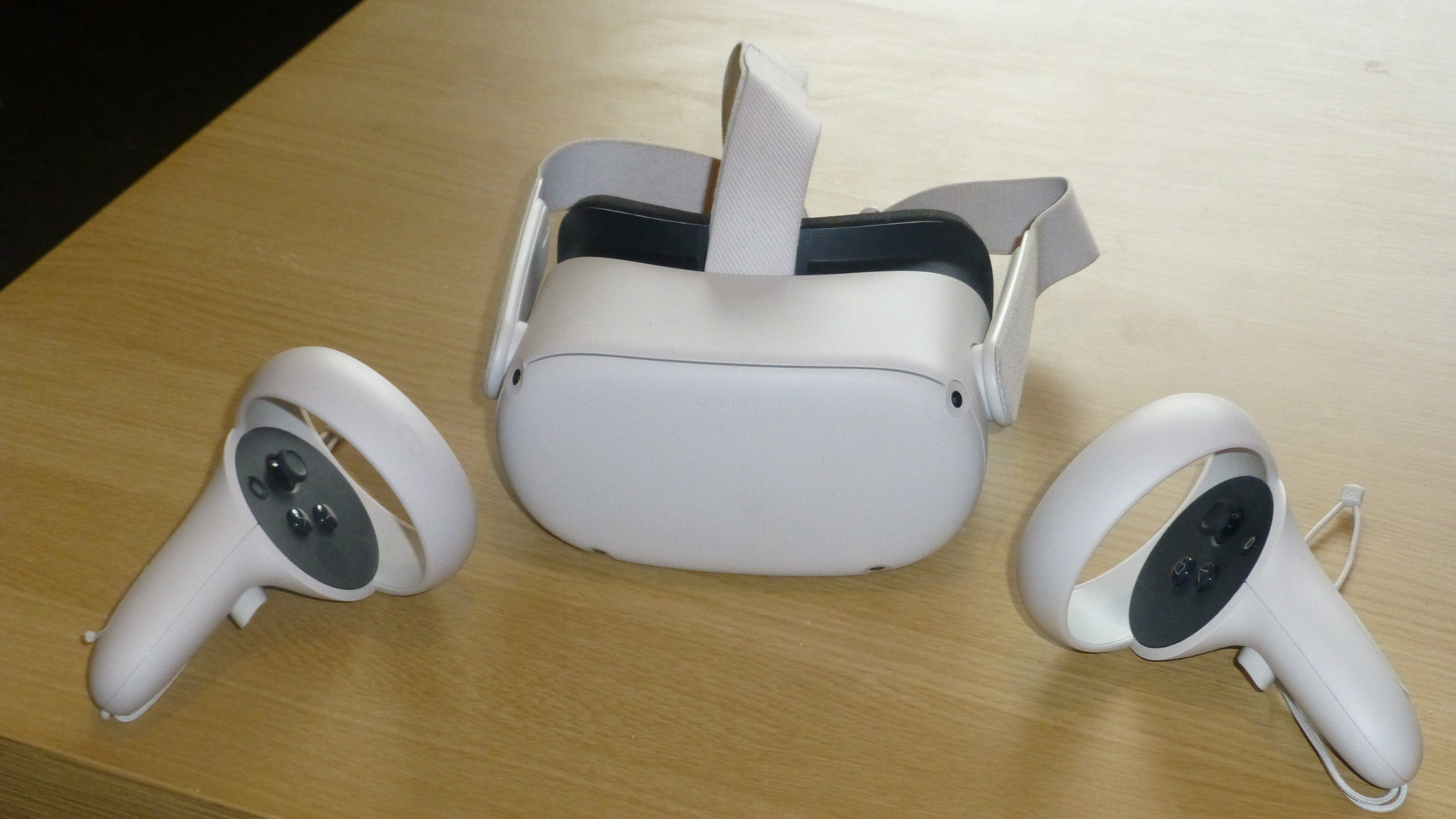Space Verdict
The Oculus Quest 2 is more powerful than its entry-level price point would suggest and is the perfect way to get into VR.
Pros
- +
Excellent standalone performance
- +
Compact and comfortable
- +
Works well as a PCVR headset
Cons
- -
Requires a Facebook account
- -
Volume control is awkwardly placed
Why you can trust Space.com
A lot has happened since we first reviewed the Oculus Quest 2, just under a year ago, and we’re not just referring to the fact that, thanks to Facebook’s name change, it’s now known as the Meta Quest 2.
The hardware itself remains the same; the Meta Quest 2 is a wireless VR headset that will let you dive into the wonderful world of VR without the need for a PC. Want to strap on your headset and mow down the undead, or take control of a rickety space capsule? Provided you’ve got a reasonable amount of space, and sufficient battery life, you can be away in moments.
And if, while it’s primarily sold as a stand-alone headset, if you do decide you want to experience Meta or Steam’s vast library of PC-VR titles, you can wire it to a PC (cable sold separately). You may not even need a wire to do that, thanks to the Meta Quest 2’s experimental Air-Link feature.
But the Meta Quest 2 is facing more competition than it was last year. HTC, for example, has released the HTC Vive Flow, a headset that, like the Meta Quest 2, offers a portable and largely wire-free VR experience. Sony has also been drip-feeding us details on the impressively-specced PlayStation VR2, set for an early 2023 release.
And Meta? It’s recently raised the price of the Meta Quest 2 by $100/£100, which seems like a baffling decision in light of the Quest 2’s current and upcoming competition. But Meta might not have had a lot of options – the company’s VR division lost $10 billion last year and has lost nearly $3 billion in Q1 2022.
So we’ve updated our review to take these factors into consideration, particularly the headset’s new, higher price. Does the Meta Quest 2 still reign atop our list of the best VR headsets, or should you look elsewhere? Read our revised review to find out.
Meta Quest 2 Black Friday Bundle (128GB) - was $399.99, now $349.99 at Amazon
Save $50: Get the Meta Quest 2 at a discounted price and get Resident Evil 4 VR and Beat Saber for free, too.
Meta Quest 2: Design
- Compact and lightweight
- Comes with two Oculus Touch controllers
- Built in 3D audio
From the moment you take it out of the box, the Oculus Quest 2 just screams portability. The headset is 13 x 12 x 9.5 cm (minus flexible strap) and weighs just over 500 grams. Without the need for a PC, it’s a piece of cake to take it to a friend’s house or stow it in a cupboard when you’re done. But there’s nothing flimsy about the Quest 2; it’s a solid, sleek piece of kit that, while we recommend you take care, has survived being knocked off the table a few times.
Breaking space news, the latest updates on rocket launches, skywatching events and more!
Platforms: Standalone, PC via wired Meta Link and wireless Air Link (experimental).
Price: $399.99/£399.99 for 128 GB, $499.99/£499.99 for 256 GB
Resolution: 1832 × 1920 per eye
Field of view: 89 degrees
Refresh rate: 60, 72, 90 Hz (120 Hz experimental)
Controllers: Touch Controllers (included)
We suspected the strap would work its way loose, lacking a proper locking mechanism, but the Quest 2 remained firmly in place and was comfortable. That said, we have reservations about its color as white has a tendency to show up grime and dust and, after a year and a half or so of use, our strap has become an unappealing off-white.
The two Touch Controllers are as solidly built as the headset itself, each with a finger trigger, a thumb trigger, a menu button, an X and Y button, and a thumbstick. The one pitfall regarding VR controllers is that you can’t look down at the buttons, but your digits naturally come to rest on the Touch’s triggers.
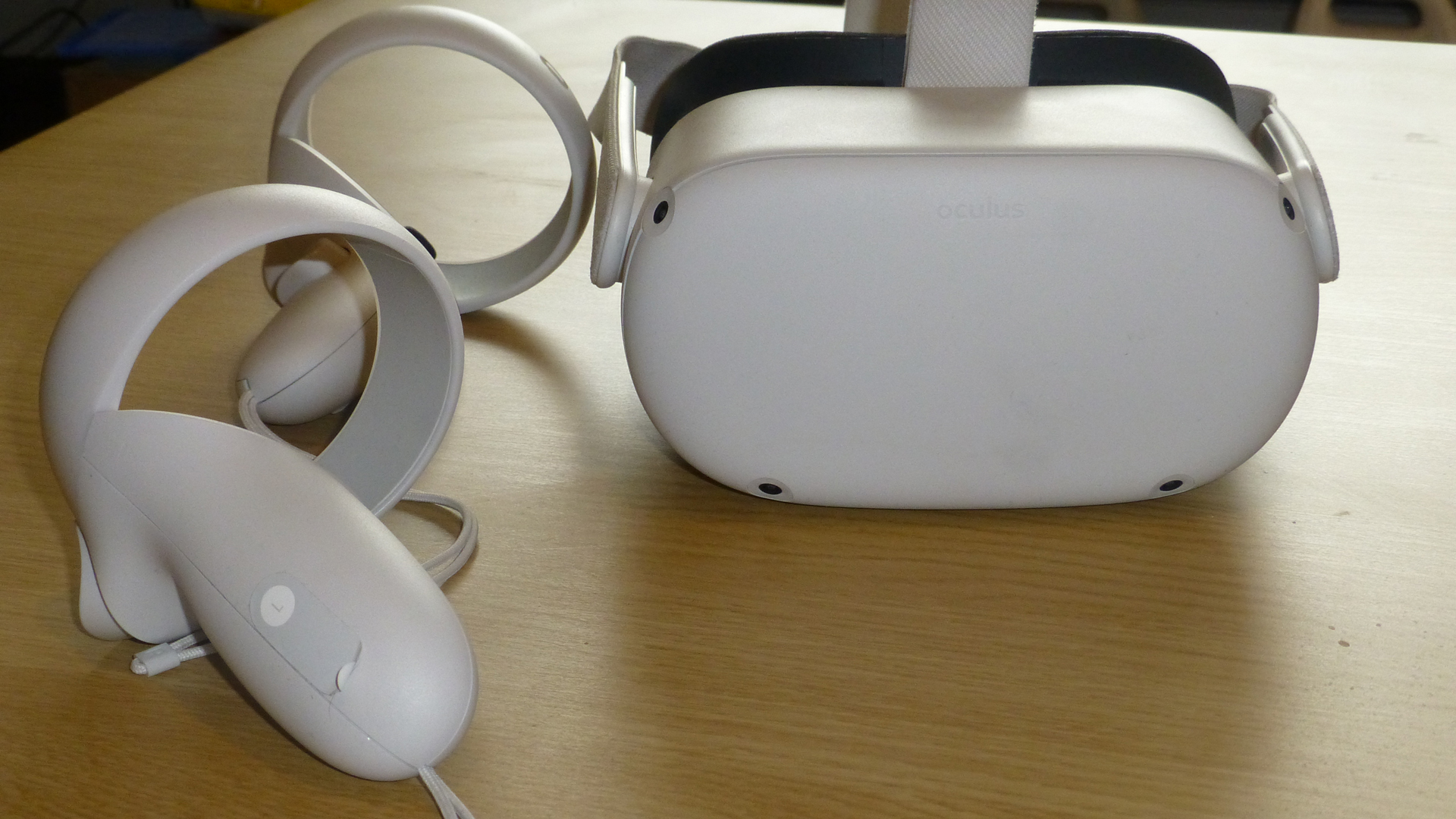
It may take a little while to get used to the thumbsticks. We kept expecting to find the thumbstick in the middle of the Touch Controller when it’s actually off to the left or right. While it feels odd at first, you’ll get used to it after a day or so. The thumbsticks are smaller than those found on your typical console controller, but we never once found our fingers slipping off.
Meta could, however, do better when it comes to the headset’s volume control. It has built-in 3D audio (with an optional headphone socket), but in order to raise or lower the volume you have to reach for the buttons at the bottom front of the headset. Having the volume control mounted on either side of the headset, closer to your ears, would have been a more logical approach.
Oculus Quest 2: Setup and performance
- Performs well with no stutter
- Excellent motion tracking
- Requires a Meta account and smartphone/tablet for setup
Unpacking and charging the Meta Quest 2 is simple – it takes just over two hours to charge from empty using the included USB-C cable and wall charger. It used to be that to set the headset itself up, you needed a Facebook account, even if you had precisely zero interest in ever using Facebook. However, Meta has done away with this requirement; you can, instead, create a Meta account which gives you much more control over the data you do or don’t share.

You do still need to run the Meta app on an iOS, Android smartphone, or tablet (not a PC) to complete setup. The Meta Quest 2 has Wi-Fi built in, but you’re still required to pair it with your phone. We initially encountered difficulties because the Oculus app kept crashing on the first phone we tried. We were able to run the app on an old iPad and we had better luck with a different brand of smartphone, but it wasn’t a good introduction to the device.
Fortunately, once you clear that hurdle, the remainder of the Meta Quest 2’s setup is much more intuitive. You’re guided through setting up the Touch Controllers, tweaking visual clarity by changing the distance between the lenses, and setting up a guardian boundary for unobstructed play. The latter needs resetting if you change rooms, but it warns you if you start straying. If you wear glasses there’s an additional insert that goes between the headset body and the foam eyepiece.
The slightly fiddly setup is worth tolerating for this headset’s excellent standalone performance. It sports a Snapdragon XR2 chip and 6 GB of memory, a major step up from the first Quest, and we were thoroughly impressed with the Meta native games and apps we tried.

Beat Saber, a rhythm game that can be more than a little frenetic, worked flawlessly and its four cameras were able to track our controller movements even when we dialed up the difficulty. You can, should you so desire, use the headset’s hand-tracking feature with some apps but, while it’s novel, it’s not a patch on using the controllers, and pinching to activate an on-screen object feels unnaturally clunky.
The Quest 2 doesn’t pretend to be 4K, but, on native apps the graphics are sharp and there’s not a hint of stutter or slowdown. The lack of a trailing wire makes it easier to turn around without getting tangled and the headset handles fast turns admirably. We did indeed get between two and three hours of battery life out of it, which was about when we felt like we wanted to give our eyes a rest. However, if you’ve bought a longer cable, you can charge the Quest 2 while wearing it.
Tethered to a PC, either via an Meta Link compatible cable (preferably connected to a USB 3.0 port) or the experimental wireless Air Link feature, the Quest 2 acts as a PCVR headset. In this case, your PC will be doing most of the heavy lifting so you’ll need to check your machine can run whatever game or application you have in mind.
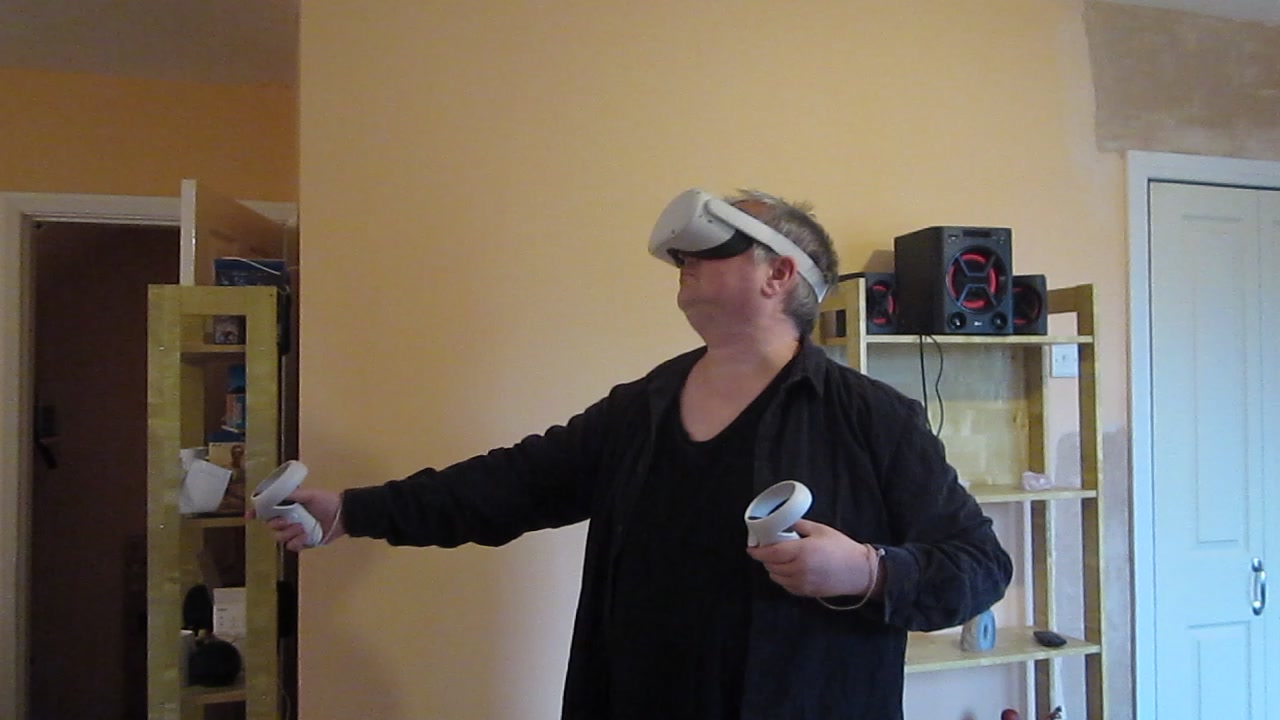
As a PCVR headset, the Quest 2 performed well, although when playing wirelessly we did detect a tiny hint of lag while playing Beat Saber. This went away when we used a cable, which also meant we got a good six hours or so of play out of it as the PC was charging the headset.
Meta Quest 2: Software and games
- Hundreds of Meta native titles
- Range of experiences as well as games
- Can play SteamVR and other PCVR titles
There are hundreds of Meta Quest 1 and 2 native titles (both of which can be played on the Quest 2). These range from games, such as Wraith: The Oblivion - Afterlife through to experiences like Apollo 11, which recreates the moon landing, and apps like VR Chat. A handful of new games are released each month, including some high profile titles and there’s also the AppLab, the Meta Quest 2 equivalent of Steam Early Access which lets you play, at your own risk, titles which haven’t gone through Meta’s approval process
The Quest 2 version of Resident Evil 4, for example, is the finest way to experience Capcom’s survival horror shooter. It’s harrowing enough to barricade a small house against angry villagers, experiencing the same in VR takes things to a whole new level.
Then there’s Vader Immortal which, while it doesn’t have you playing as the infamous Sith Lord, is a fun foray into the Star Wars universe. The Walking Dead: Saints & Sinners is another stand-out title; dispatching zombies then realizing how badly you’ve let yourself get outnumbered is quite something. And Beat Saber, while it’s not billed as such, is a great musical work-out.
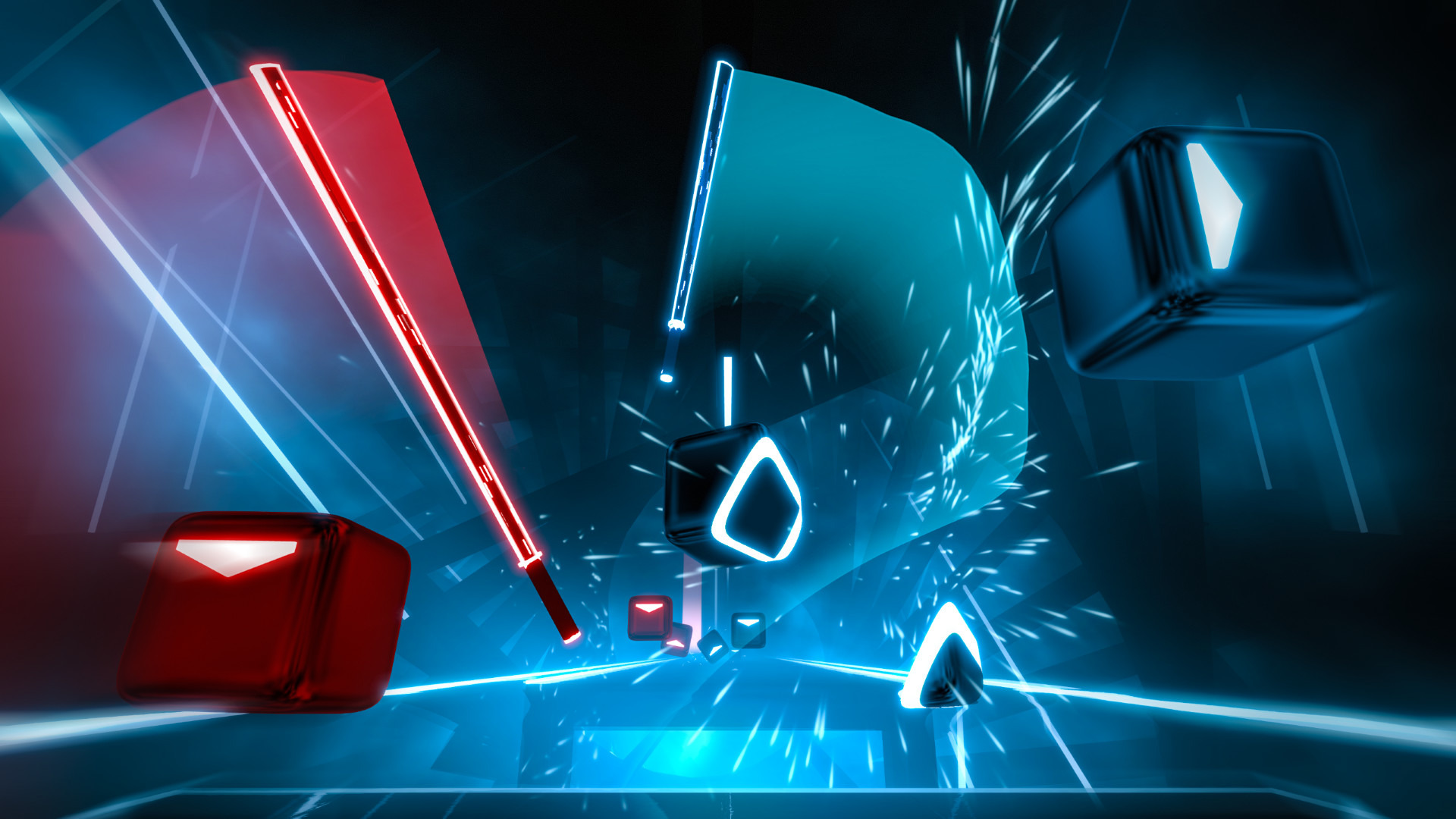
Even if science fiction and horror leave you cold, you’ll find plenty of Quest outings to catch your eye. How about climbing a skyscraper, courtesy of The Climb 2? The recently-released Interkosmos 2000 is a great space-based outing that puts you in charge of a semi-realistic spacecraft, on a mission to rescue the ISS. And, while it takes a while to get used to all the various buttons and dials, it successfully sells the illusion of being in space, just a few equipment failures from a lonely demise.
There are also social apps and, aside from just chatting in VR, you can watch (paid) movies with other people and share your gameplay. Although we dabbled in some of these, none of them kept us engaged once the initial novelty wore off.
On top of that, by connecting your headset to your PC you can choose from Steam’s library of over 5,000 VR or VR supported games as well as any other Oculus compatible titles – Fallout 4 VR, Skyrim VR, and Half Life: Alyx, Star Wars Squadrons - are all excellent and that’s just the tip of the iceberg. There is a little more messing around involved in playing PCVR titles, launching Steam VR, and so forth, so given the choice of playing the Quest version of The Walking Dead: Saints & Sinners or its slightly prettier PC incarnation, we’d choose the former.
Oculus Quest 2: Price
- Reasonable value for money
- Available with 128 GB or 256 GB storage
At $399 for the base 128 GB model (we’ve not come even close to filling that), the Meta Quest 2 is reasonable value for money and still cheaper than the competition. However, the recent $100/£100 price increase means it’s not quite the steal it once was.
- Related: VR headset deals
The HTC Vive Flow, for the same price as the 256GB Meta Quest 2, is even more portable than the latter, though it’s geared towards experiences, not games. Then there’s the wired PlayStation VR2 which, launching early next year, should offer true 4K VR gaming. If Sony can match the original PSVR’s $349 price tag, and you’ve got a PlayStation 5, it could well be worth waiting for.
Also, the official Oculus Link cable, used to connect the headset to a PC, is particularly pricey considering what it does. It’s five meters long, which is a reasonable length, but costs $79.99. The Oculus website suggests that this Anker cable is a suitable, much cheaper substitute and we’ve had absolutely no problems with it.

Should you buy the Meta Quest 2?
If you’re looking for standalone VR gaming, or you’re a newcomer to the world of virtual reality, you should buy the Meta Quest 2. Being able to play PCVR games is a bonus but it’s the Quest 2’s standalone support that makes it shine.
There’s no way round the price rise, though purchasers get Beat Saber free till the end of the year but unless you’re planning on filling it with movies, the cheaper 128GB Meta Quest 2 should be enough for most.
If Meta Quest 2 isn’t for you...
If you don’t mind being tethered to a PC, the HP G2 Reverb also offers good value for money. Priced at $599, its resolution is a little higher than the Oculus Quest 2 and HP also tends to discount it every now and then. As of right now, there’s a weekly special making it $499. You can check out our HP Reverb G2 review here.
Or if you want a top-end headset and have a top-end PC to match, there’s the HTC Vive Pro 2. It’s pricey at £1,299/$1,299 but this high-resolution headset sports a wide field of view, great sound and, once you’ve set it up correctly, excellent tracking. You can read our HTC Vive Pro 2 review here.
As for the PlayStation VR2? As promising and powerful as it sounds, Sony has remained tight-lipped as to whether it’ll support original PSVR titles. If it doesn’t, early adopters could find themselves with a meagre selection of games to play. We’d hold off on purchasing till we know for sure.
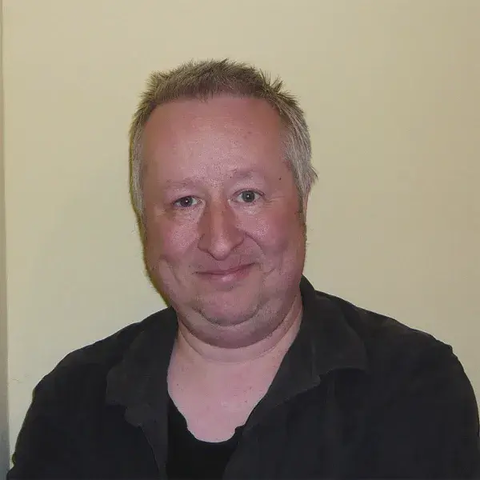
Chris is a freelance journalist who, aside from covering games and gaming-related tech, has a taste for horror, sci-fi and the post-apocalyptic. As well as Space.com, you can find his work at The Escapist, GameSpew (where he’s the morning news writer) and more. You can follow him on Twitter @MarmaladeBus.
